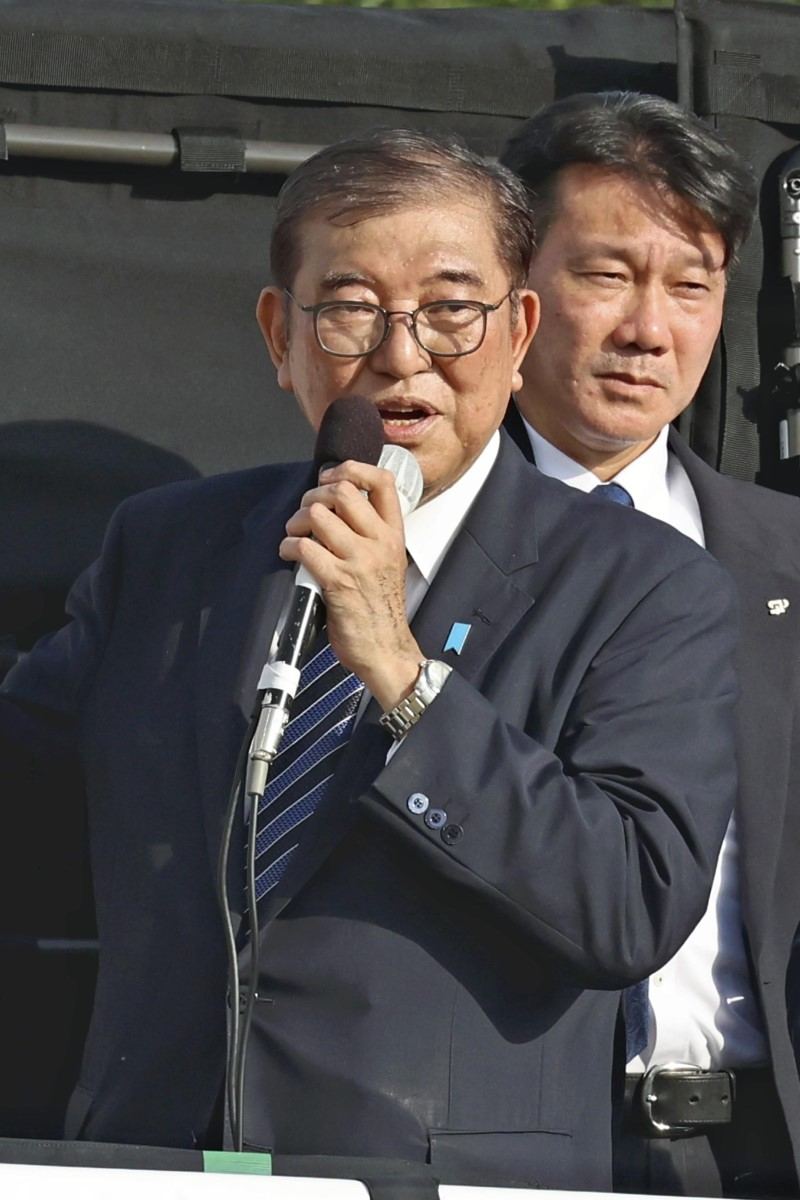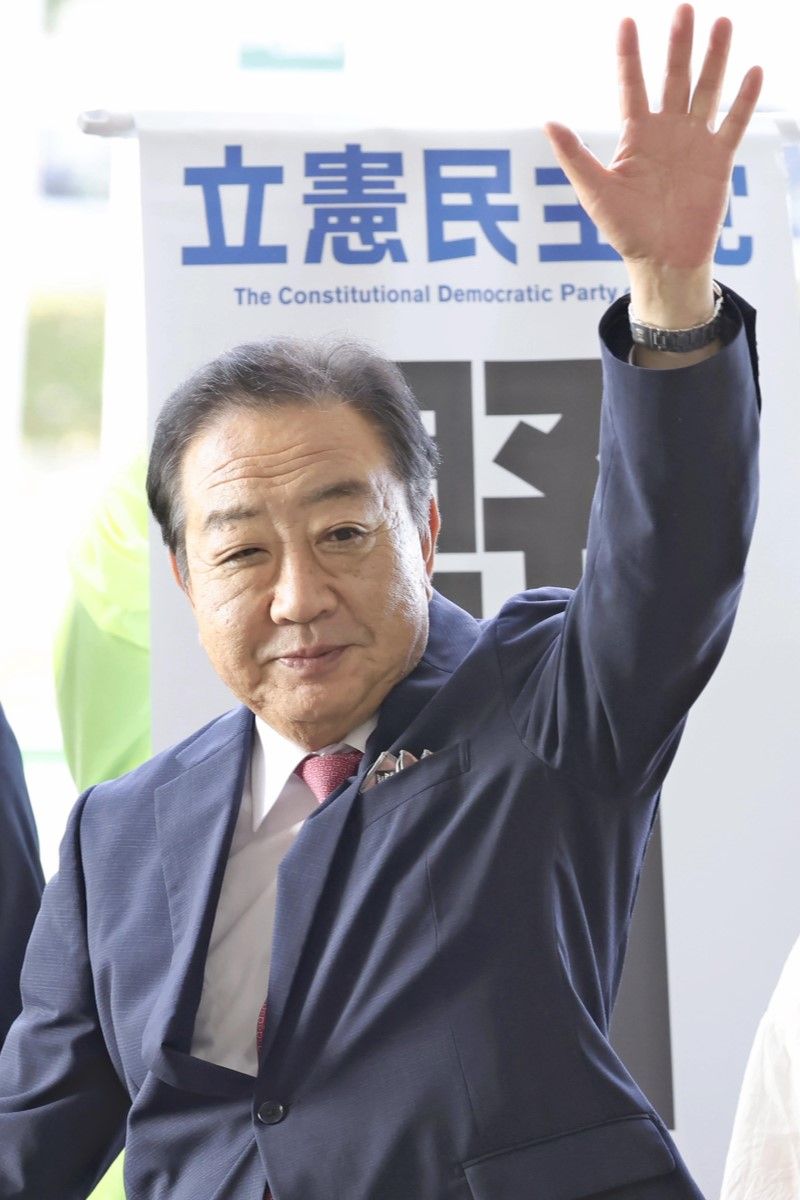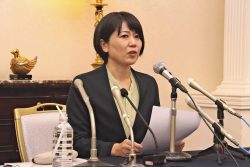LDP’s Expected Ishiba Honeymoon Appears To Be A Dud; Little Electoral Boost Seen From New Cabinet In Poll


Left: Prime Minister Shigeru Ishiba gives a campaign speech in Sakaide, Kagawa Prefecture, on Wednesday.
Right: Constitutional Democratic Party of Japan President Yoshihiko Noda waves to an audience in Shibata, Niigata Prefecture, on Wednesday.
15:19 JST, October 17, 2024
The latest nationwide opinion survey on the early stage of the House of Representatives election campaign highlighted the fact that the Liberal Democratic Party has not enjoyed much of a honeymoon period despite the inauguration of a new Cabinet.
Although the LDP and its ruling coalition partner Komeito appear likely to secure a majority of seats together in the upcoming election, it is unclear if the LDP can secure a majority on its own. The question now is the extent to which Prime Minister Shigeru Ishiba can keep his LDP from losing seats.
Disappointment
“With deep regret, I must beg of you to allow the LDP and Komeito to take the reins of government once more,” Ishiba, who also is the LDP president, said to the crowd in a campaign speech Wednesday in Sakaide, Kagawa Prefecture.
Ishiba has set 233 seats — a bare majority of the 465 seats in the lower house — as the winning line.
The latest survey conducted by The Yomiuri Shimbun suggested that the LDP and Komeito together could achieve this target but still faces challenges. The survey results showed that the LDP is behind in 46 constituencies and the party expects close battles in 118 others. There is a possibility that it will not even hold onto the 247 seats it possessed before the campaign and could fail to win a majority on its own.
Ishiba dissolved the lower house only eight days after taking office — the shortest such interval since the end of World War II — with the aim of bringing the momentum from the LDP presidential election and the inauguration of the new government into the upcoming election. But the headwind created by a series of political fundraising scandals involving LDP factions was much stronger than the party had expected.
Crucial moment
Despite making steady progress in conservative strongholds such as Gunma, Toyama, Tottori and Yamaguchi prefectures, the LDP is losing ground or facing close races in many constituencies in urban areas where opposition parties are strong.
Incumbent ministers and high-profile lawmakers who lost in single-seat constituencies but were elected in the proportional representation segments in the previous race stand on shaky ground this time.
Justice Minister Hideki Makihara is trailing former Constitutional Democratic Party of Japan President Yukio Edano in Saitama Constituency No. 5, while Agriculture, Forestry and Fisheries Minister Yasuhiro Ozato trails CDPJ member Takeshi Noma in Kagoshima Constituency No. 3.
In Kanagawa Constituency No. 20, former LDP Secretary General Akira Amari is locked in a close contest with Sayuri Otsuka of the CDPJ.
The LDP’s concern now is how many candidates could win in the tight races in such constituencies. If the party loses too many seats, Ishiba will see his ability to lead the party weaken, and that would negatively affect the management of the government after the election.
“The prime minister has a reputation for being popular in regional areas, and he is in a crucial period as his true ability is being tested,” a former cabinet minister said.
Chance comes around
This short-notice battle had kept the CDPJ from joining forces with the other parties against the LDP, but the CDPJ still has a chance to increase the number of their seats by itself. In fact, the party is demonstrating its strength in areas where liberals have traditionally been strong, such as Hokkaido, Niigata and Aichi prefectures.
Some analysts see that former Prime Minister Yoshihiko Noda, who became the CDPJ leader in September, has managed to differentiate his party from other opposition parties by adopting a pragmatic centrist approach, and has successfully attracted moderate conservatives who have left the LDP.
Noda said Wednesday in Shibata, Niigata Prefecture: “Let’s realize politics that is focused on each and every individual and not influenced by large companies and organizations. The change of government is the greatest political reform.”
Noda’s stance to put the “politics and money” issue at the top of agenda issue was “simple and easy for voters to understand,” a senior CDPJ member said.
Meanwhile, the survey saw a weakening of the Japan Innovation Party, which has been strong in the Kansai region. This time, the JIP fielded candidates in six Osaka and Hyogo constituencies where it had previously cooperated with Komeito to avoid direct competition, resulting in tight races in most of those constituencies.
"Politics" POPULAR ARTICLE
-

Japan to Support Central Asian Logistics Route That Bypasses Russia, Plan to Be Part of Upcoming Summit in Tokyo
-

Japan to Tighten Screening of Foreigners’ Residential Status by Providing Information of Nonpayment of Taxes
-

Takaichi Cabinet Approval Holds at 72% as Voters Back Aggressive Fiscal Stimulus, Child Benefits
-

Chinese, Russian Bombers Flew Unusual Path by Heading Toward Tokyo; Move Likely Meant to Intimidate Japan
-

Takaichi Meets Many World Leaders at G20 Debut in Johannesburg; Speaks with Heads of Countries Including Italy, U.K., Germany, India
JN ACCESS RANKING
-

Keidanren Chairman Yoshinobu Tsutsui Visits Kashiwazaki-Kariwa Nuclear Power Plant; Inspects New Emergency Safety System
-

Imports of Rare Earths from China Facing Delays, May Be Caused by Deterioration of Japan-China Relations
-

University of Tokyo Professor Discusses Japanese Economic Security in Interview Ahead of Forum
-

Japan Pulls out of Vietnam Nuclear Project, Complicating Hanoi’s Power Plans
-

Govt Aims to Expand NISA Program Lineup, Abolish Age Restriction
























